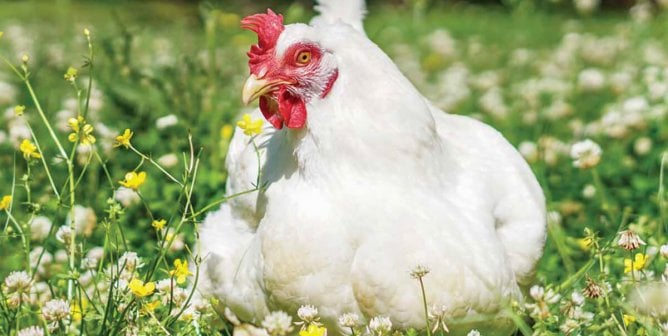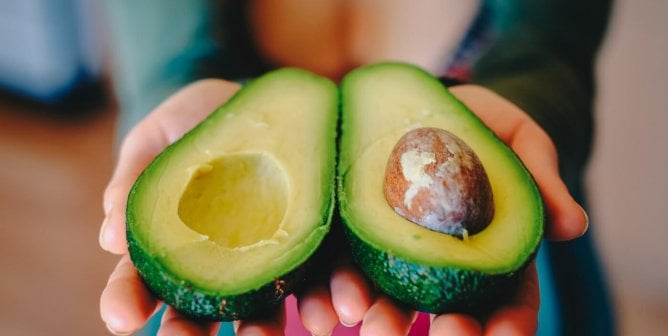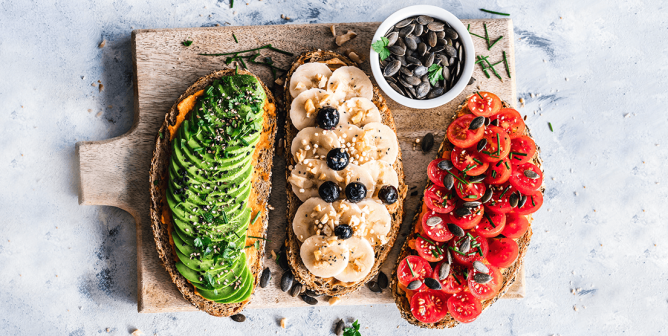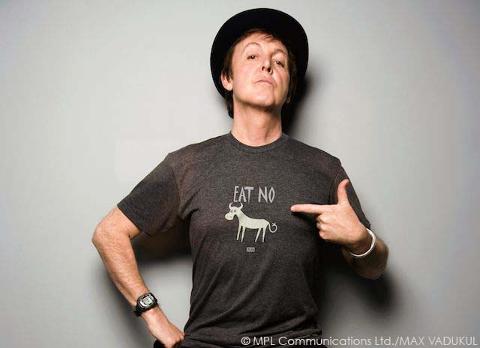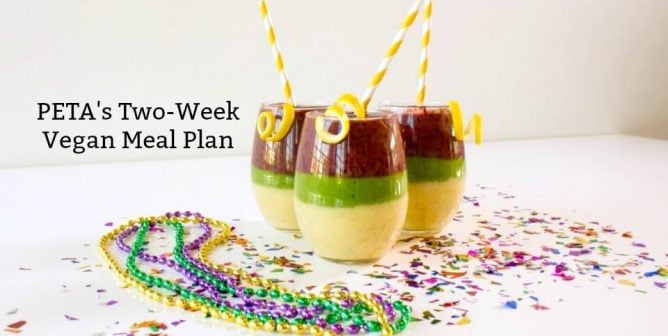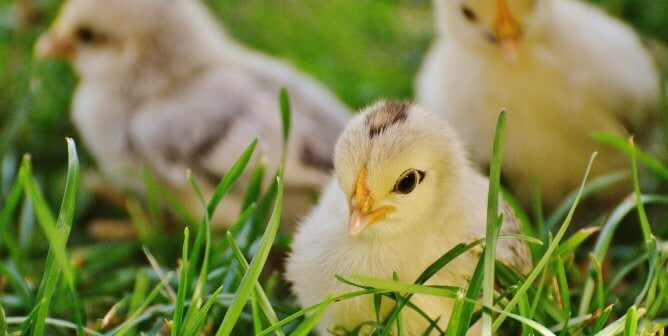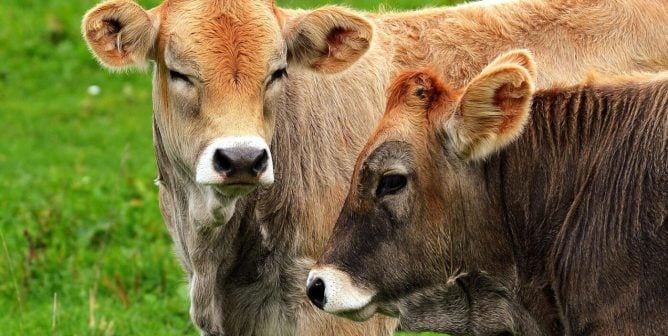Animals Used for Food
On today’s farms, animals used for food are crammed by the thousands into filthy, windowless sheds or stuffed into wire cages, metal crates, and other torturous devices. Billions of fish—along with “nontarget” animals, including sharks, sea turtles, birds, seals, and whales—are caught each year by the commercial fishing industry. Animals used for food will never raise their families, root around in the soil, build nests, or do anything else that’s natural and important to them. Most won’t even feel the warmth of the sun on their backs or breathe fresh air until the day they’re loaded onto trucks headed for slaughterhouses.
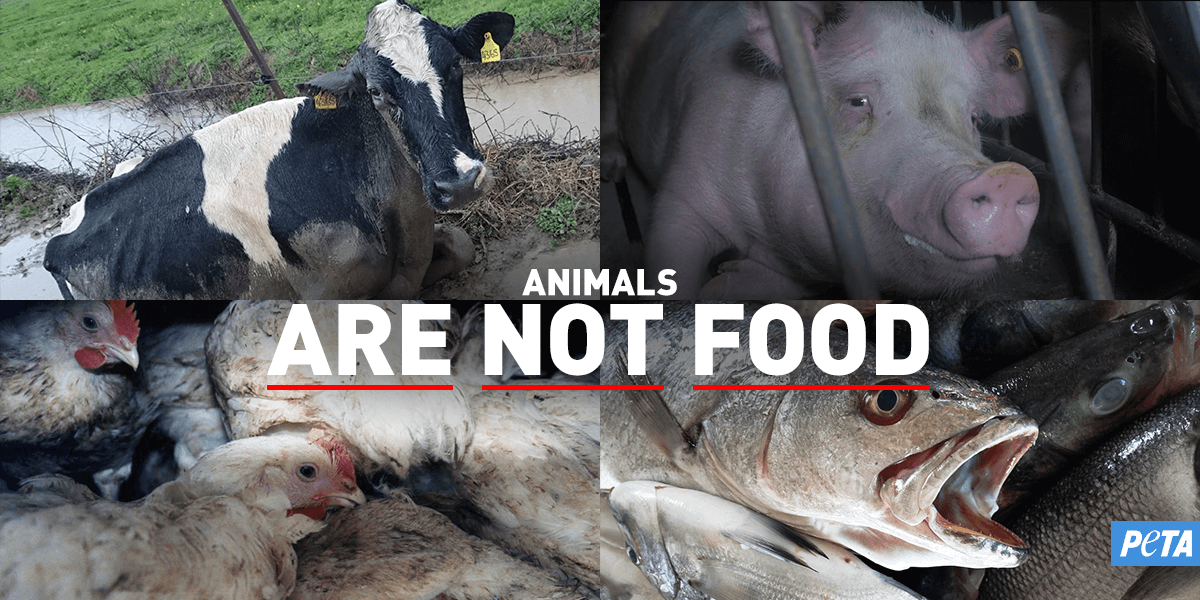
PETA Is at the Forefront of Stopping the Abuse of Animals Used for Food
PETA and our millions of supporters around the world know that animals aren’t ours to use for food—they’re unique, feeling individuals with their own wants and needs. That’s why we work behind the scenes with companies to get delicious vegan options added at restaurants across the country, among other efforts.
Our hard-hitting campaigns and eye-opening investigations show people the reality of using animals for food. For decades, PETA’s ads, articles, and bold protests have revealed the horrors that the meat and dairy industries try so hard to hide—and the public can’t help but take notice.
How Many Animals Are Killed for Food Every Year?
- More than 29 million cows suffer and die in the meat and dairy industries every year.
- In the U.S., approximately 9 billion chickens are killed for their flesh each year and 305 million hens are used for their eggs.
- Of the millions of pigs killed every year for food, more than 1 million die annually just during transport to the slaughterhouse, and at least 40,000 have sustained injuries by the time they arrive.
- An estimated 245 million turkeys are raised and killed for their flesh every year in the U.S. More than 46 million of them are killed each year at Thanksgiving alone, and more than 22 million die at Christmas.
- More than 31 million ducks are killed each year for their flesh and for cruelly obtained foie gras.
- More fish are killed for food each year than all other animals combined, as tens of billions of fish and shellfish are slaughtered annually.
What Is ‘Factory Farming’?
The overwhelming majority of animal-derived foods sold in the U.S. today—including meat, eggs, milk, and cheese—come from large-scale, industrialized farms known as “concentrated animal-feeding operations.” On these “factory farms,” animals are packed in as tightly as possible to maximize output and profit, even though this causes many to die from disease or infection before being sent to the slaughterhouse.
According to an analysis by the Sentience Institute, 99% of animals used for food in the U.S. are living on factory farms.
Animals Used for Food Endure Constant Fear and Torment
- They’re often given so little space that they can’t even turn around or lie down comfortably. Egg-laying hens are kept in small cages, chickens and pigs are kept in jam-packed sheds, and cows are kept on crowded, filthy feedlots.
- Animals endure mutilations such as debeaking, dehorning, and castration without painkillers.
- Most farmed animals have been genetically manipulated to grow larger or to produce more milk or eggs than they naturally would. Some chickens grow so large that their legs cannot support their outsized bodies, and they suffer from starvation or dehydration when they can’t walk to reach food and water.
- Many fish on aquafarms suffer from parasitic infections, diseases, and debilitating injuries. Conditions on some farms are so horrendous that millions of fish die before farmers can kill and package them for food.
- In the foie gras industry, pipes or tubes are shoved down the throats of ducks and geese three times daily so that 4 pounds of grain can be pumped into their stomachs to produce the diseased “fatty liver” that some diners consider a delicacy.
- Babies are torn away from the sides of their loving mothers, and the nourishment that the mothers long to provide their offspring is instead shipped off for human consumption.
What About Animals on ‘Humane’ Farms?
Animals on organic and “free-range” farms often endure the same cruel mutilations as those on other farms. At the end of their miserable lives, these animals are typically shipped on trucks to the same slaughterhouses used by massive factory farms.
Remember: “Organic,” “natural,” “humane,” “pasture-raised,” “grass-fed,” and “free-range” are just labels. The meat, eggs, and milk stamped with them are filled with the same artery-clogging saturated fat and cholesterol as all other animal-derived foods. These labels represent little more than efforts to make consumers feel better—they often mean little to nothing for the animals involved. The only truly humane foods are vegan ones.
How Animals Used for Food Are Killed
When their bodies wear out from producing milk or eggs, animals raised for food are crowded onto trucks and transported for miles through all weather extremes, typically without food or water. At the slaughterhouse, the throats of those who survived the transport are slit, often while they’re still conscious. Many remain alert when they’re plunged into the scalding-hot water of the defeathering or hair-removal tanks. Some are even still awake while their bodies are being skinned or hacked apart. Most animals killed for food are practically babies, slaughtered after just a few months—far short of their natural life expectancy.
The Perks of Going Vegan
Going vegan is also good for your health. There is no nutritional need for humans to eat any animal product. All our dietary needs—even as infants and children—are best supplied by a meatless diet. The Academy of Nutrition and Dietetics notes that eating plant-based foods reduces the risk of suffering from many chronic degenerative diseases and conditions, including heart disease, cancer, hypertension, diabetes, and obesity.
Raising animals for food requires massive amounts of resources. Two-thirds of all agricultural land in the U.S. is used to raise animals for food or to grow grain to feed them. Chickens, pigs, cattle, and other animals raised for food are the primary consumers of water in the U.S.: A single pig consumes 21 gallons of drinking water per day, while a cow on a dairy farm drinks as much as 50 gallons daily. Farms produce billions of pounds of manure daily, which ends up in lakes, rivers, and even drinking water.
You Can Help Animals Used for Food
With so many great vegan options, eating green has never been more delicious. Whether you go vegan for animals, the environment, or your health, you have the power to change the world, simply by changing what’s on your plate.
We have all the free resources you’ll need to get started, including the following:
- Order a vegan starter kit
- Check out this vegan meal plan for inspiration
- Take action to get more vegan options added at chain restaurants
- Share this page with your friends, family, and social media followers. Let them know how easy it is to start making a difference for animals used for food today!
Popular Resources
Going vegan is easier than ever before, but we are here to make it even easier—as easy as 1, 2, 3!
PETA’s free vegan starter kit has everything from recipes and tips on eating out to health information. Order now by filling out the form! Or, order for a friend.
Music legend Paul McCartney delivers a powerful narration of this must-see video. Watch now to discover why everyone would be vegetarian if slaughterhouses had glass walls.
PETA’s chefs have created sample vegan menus featuring simple, easy recipes that anyone can follow.
Your source for great-tasting vegan and vegetarian recipes, information on all aspects of vegan and vegetarian living, news about PETA’s campaigns to stop factory farming, tips and free stuff to help you promote a vegetarian lifestyle.
Your source for great-tasting vegan and vegetarian recipes, information on all aspects of vegan and vegetarian living, news about PETA’s campaigns to stop factory farming, tips and free stuff to help you promote a vegetarian lifestyle.

